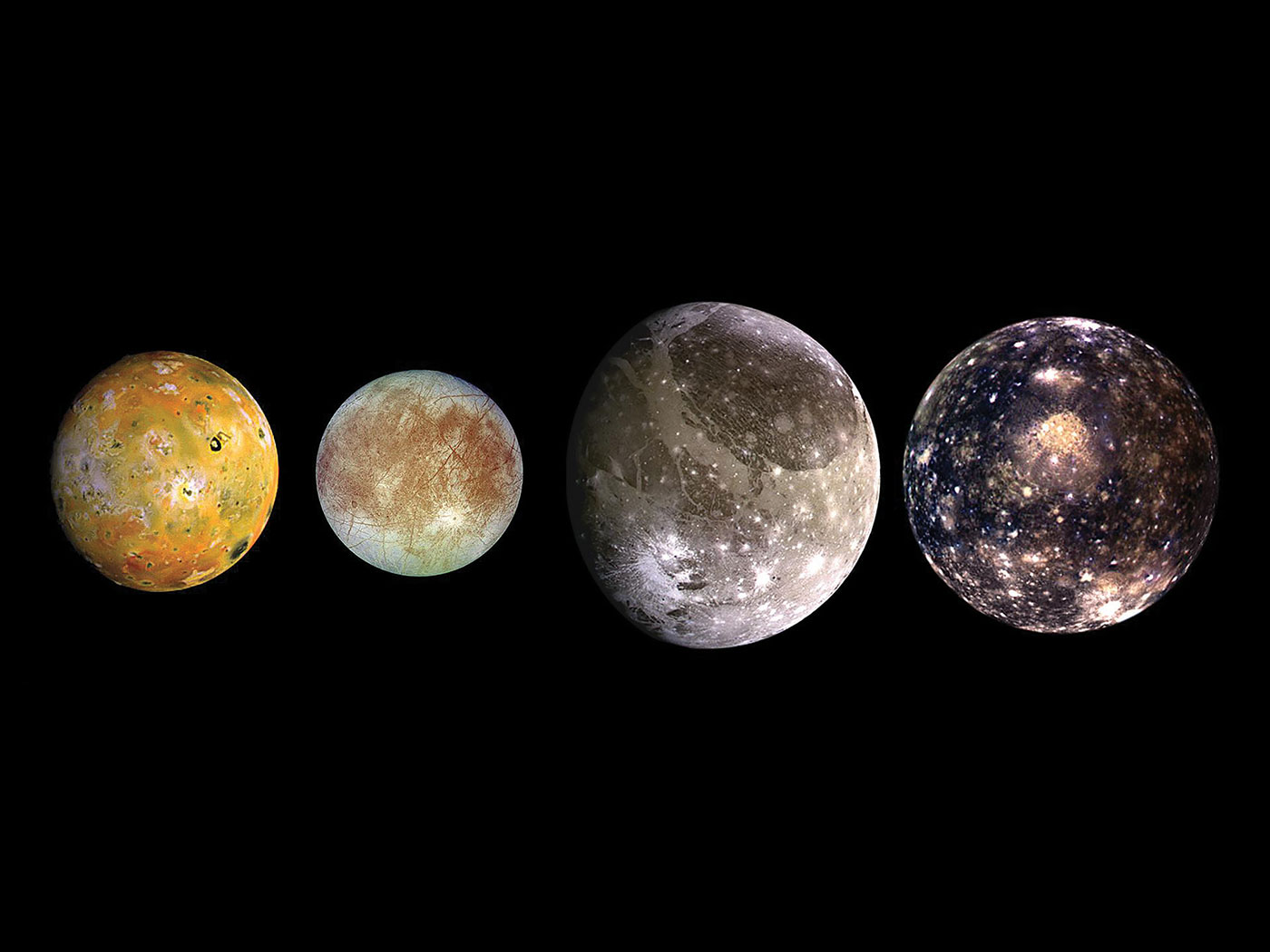1. What is geocentricity?
Geocentricity is a conceptual model of the form of the universe which makes three basic assertions about the nature of the earth and its relationship to the rest of the universe. These are:
a. the earth is the center of the universe,
b. the earth is fixed (i.e., immobile) in space, and
c. the earth is unique and special compared to all other heavenly bodies.
2. What is the History of geocentricity?
The teaching of geocentricity can be traced in western thought at least back to Aristotle (384-322 B.C.). Aristotle argued, for example, that the reason why all bodies fall to the ground is because they seek their natural place at the center of the universe which coincides with the center of the earth.
A geocentric model of the universe seems first to have been formalized by Ptolemy, the famous Greek astronomer who lived in Alexandria around A.D. 130. Ptolemy's model envisioned each planet moving in a small circle, the center of which moved along a large circular orbit about the earth. This model was generally accepted until Copernicus published his heliocentric model in 1543.
The heliocentric view pictures the sun as motionless at the center of the solar system with all the planets, including the earth, in motion around it. Copernicus' heliocentric model, because it used circles to describe the orbits of the planets about the sun instead of ellipses, was as clumsy and inaccurate as Ptolemy's geocentric model. However, it was conceptually simpler. It quickly gained acceptance, though not without considerable controversy. The conflict between these two views came to a head in the well-known trial of Galileo by the Inquisition in 1632.
Starting from a heliocentric viewpoint, Kepler (1571-1630) was able to formulate laws of planetary motion which accurately described the orbits of the planets for the first time. Newton (1643-1727) was then able to explain why Kepler's laws worked based upon his famous law of gravity. This tremendous progress in understanding resulted in almost universal acceptance of heliocentricity and rejection of geocentricity.
3. What does modern science say about geocentricity?
Many attempts were made to prove that heliocentricity was true and geocentricity was false, right up until the early 1900's. All such attempts were unsuccessful. The most well-known of these is the Michelson-Morley experiment which was designed to measure the change in the speed of light, due to the assumed motion of the earth through space, when measured in different directions on the earth's surface. The failure of this experiment to detect any significant change played an important role in the acceptance of Einstein's theory of special relativity.
The theory of special relativity holds as a basic assumption that the speed of light will always be the same everywhere in the universe irrespective of the relative motion of the source of the light and the observer. The ability of special relativity to successfully explain many non-intuitive physical phenomena which are manifested by atomic particles when moving at speeds greater than about one-tenth the speed of light seems to corroborate this assumption. Thus, the failure of the Michelson-Morley experiment (and all other experiments of similar intent) to detect any motion of the earth through space is understood by modern science in terms of relativity rather than geocentricity.
Einstein's theory of general relativity adds further to the debate. It asserts that it is impossible for a human observer to determine whether any material body is in a state of absolute rest (i.e., immobile in space). It claims that only motion of two material bodies relative to one another can be physically detected. According to this theory the geocentric and heliocentric viewpoints are equally valid representations of reality, and it makes no sense whatsoever scientifically to speak of one as being true and the other false. This shift in emphasis from an either-or argument to a synthesis and acceptance of both viewpoints is summed up by the well-known astronomer, Fred Hoyle, as follows:
The relation of the two pictures [geocentricity and heliocentricity] is reduced to a mere coordinate transformation and it is the main tenet of the Einstein theory that any two ways of looking at the world which are related to each other by a coordinate transformation are entirely equivalent from a physical point of view.... Today we cannot say that the Copernican theory is 'right' and the Ptolemaic theory 'wrong' in any meaningful physical sense.[1]
Relativity is the theory which is accepted as the correct one by the great majority of scientists at present. However, many science teachers and textbooks are not aware of this, and it is not uncommon to find heliocentricity taught as the progressive and "obviously true" theory even today.
4. What does the Bible teach about geocentricity?
To learn what the Bible teaches regarding geocentricity, it is necessary to consider separately the three basic assertions of uniqueness, centrality, and fixity mentioned above since the composite "theory of geocentricity" is nowhere mentioned in the Bible.
The assertion that the earth is unique and special (item "c" above) is clearly and unequivocally taught in the first chapter of Genesis. The plain sense of the creation account is that all other heavenly bodies were not even brought into existence until the fourth day of creation. Thus, God had already created the earth, separated the waters above and below the atmosphere, formed the earth into continents and oceans, and brought forth vegetation upon the earth before He paused to create the solar system, the Milky Way, and all of the other material bodies in the universe. It is very clear that the creation of the earth was distinct from that of any other heavenly body.
The Biblical doctrine of the uniqueness of the earth is strongly supported by modern space exploration. In particular, every effort by scientists to demonstrate that life does or possibly could exist on other planets in our solar system has so far failed. Such efforts have only served to underscore how different the earth is in this regard from all other heavenly bodies which we have been able to study. While the earth teems with life, elsewhere space appears to be only barren and incredibly hostile to life. The earth gives every indication that it was specially designed for life, and it is unique in this regard.
In contrast to the bountiful evidence in the Bible which teaches that the earth is special, nowhere is it taught that the earth is the center of the universe (item "a" above). In fact, the Bible provides no explicit teaching on any questions relating to the form of the universe. We are not told, for example, whether the universe is finite or infinite, and no explicit statement can be found to help us know whether space is flat or curved. This is the type of information we would need to deduce whether the earth is at the center of the universe or if it even makes sense to say that the universe has a center. On matters relating to the physical form of the universe, the Bible is mute.
This leaves the more controversial assertion (item "b" above) that the earth is motionless in space to be discussed.
In fact, the Bible contains no explicit teaching on this matter either. Nowhere does the Bible set about to deal explicitly with the question of whether the earth is moving through space or not. To be sure, one can fashion implicit arguments for an immobile earth from the Bible, but in no instance do the Bible verses used to accomplish this goal rest in a context of an overall discussion of the physical form of the universe.
Evidently, while the physical form of the universe is an interesting scientific issue, it is not of very great importance Biblically. The lack of explicit Biblical teaching on this whole matter makes it impossible to call any conceptual model of the form of the universe "the Biblical view."
5. What is the role of geocentricity in creationism?
The Biblical status of the doctrine of creation contrasts sharply with that of geocentricity. The Bible opens with the explicit declaration: "In the beginning God created the heavens and the earth," and Genesis 1 goes on to outline in detail the doctrine of creation. While it is impossible to find any definitive teaching in the Bible on the physical form of the universe, it is impossible to miss the explicit teaching in the Bible that the world was supernaturally created by God, for it permeates Scripture.
Geocentricity and creationism are really separate matters. Because of the contrast in the way the Bible deals with these two issues, I believe that attempts to link geocentricity and creationism are ill-founded.
6. What can we learn of general importance from the geocentricity-helio-centricity relativity debate?
Perhaps the most important lesson to be learned from the history of geocentricity is in connection with the question, "What role should scientific discovery play in the interpretation of the Bible?" It is surely ironic to see the incident of Galileo's trial before the Inquisition paraded as a supposedly unarguable illustration of the "mistake" recent-creationists make when they insist on a literal, supernatural, six-day creation and fail to yield to modern scientific views of how the universe came to be. "After all," we hear, "the theologians said that Galileo's heliocentric viewpoint was heresy, but now everybody knows that the theologians were wrong and Galileo was right."
In actual fact, as we have seen above, the current scientific consensus is that "Today we cannot say that the Copernican theory [which Galileo held] is 'right' and the Ptolemaic theory [which the theologians held] 'wrong' in any meaningful physical sense."[1]
The generally overlooked lesson here is that scientific theories do not provide a very secure basis from which to interpret Scripture. In the course of the last five hundred years the weight of scientific consensus has rested in turn with each of three different theories about the form of the universe: first geocentricity, then helio-centricity, and now relativity.
This is the way it is with scientific theories—they come and go. But the Word of God endures forever. Let us be immovable in upholding what the Bible clearly teaches.
[1] Fred Hoyle, Nicolaus Copernicus (London: Heinemann Educational Books Ltd., 1973), p. 78.
* Dr. Aardsma is Assistant Professor of Astro Geophyics at ICRBouw, D. "The Bible and Geocentricity." Bulletin of the Tychonian Society, no. 41 (January, 1987), 22-25. (A more recent work by Bouw is: Geocentricity [Cleveland: Association for Biblical Astronomy, 1992].)
Hoyle, Fred. Nicolaus Copernicus. London: Heinemann Educational Books Ltd., 1973.
Reichenbach, Hans. From Copernicus to Einstein. New York: Dover Publications, Inc., 1980.
Ronan, Colin Alistair. "Copernicus" The New Encyclopedia Britannica. 15th ed. XVI, 814-815.
















